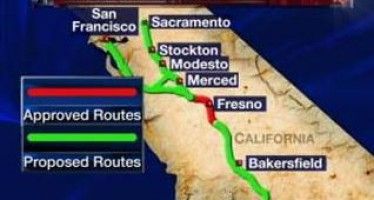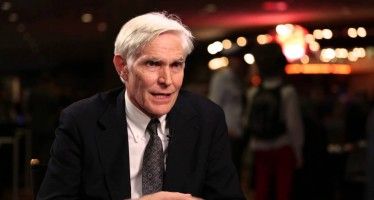Inhaling CARB's Hot Air
APRIL 22, 2010
On Thursday, it was hard to tell what was stranger: The man walking around the first floor of the Cal/EPA headquarters in Sacramento covered in about 500 plastic shopping bags or the California Air Resources Board (CARB) hearing going on one flight up. Of the two, Shopping Bag Man was probably easier to explain.
He was simply part of the Earth Day festivities that filled the building’s lobby with booths about recycling, bicycle commuting and fuel cell construction. As for what was going on upstairs in the Byron Sher Auditorium, that was anybody’s guess.
Anyone reading the day’s agenda who wasn’t already an expert in California environmental law and regulation would have been stumped: “Public Meeting to Update the Board on the Implementation of the California Global Warming Solutions Act of 2006 (Assembly Bill 32) and the Climate Change Scoping Plan” read the first item up for discussion.
Put simply, it was just another update on how the state is handling AB32, the widest ranging – and most controversial – set of greenhouse gas regulations in the nation. But nothing about CARB is put simply, so a gobbledygook-filled hearing agenda wasn’t surprising.
The agency is apparently “approaching the home stretch” on clamping down on greenhouse gas emissions, Board Chairman Mary D. Nichols said. But the board began discussing how “divisive” AB32 has become, Nichols became ironic. “The language that we use can help in this,” she said.
I presume she meant the language that she, the rest of the board and the whole of CARB staff – which number about 1,200 at last count – uses when explaining complicated air regulation issues to the taxpaying public. But as I listened to her, her board colleagues, the staffers who made PowerPoint Presentations and a few other state officials who testified, I realized that “language” is a far greater hurdle than Nichols probably realizes.
It’s because state officials speak a different language entirely from you and me. The agenda mentioned above is just a tiny sample of a way of “communicating” that, by accident or design, will glaze over the eyes of anyone not already intimately connected to government.
Just try figuring out what CARB Executive Director James Goldstein meant when he told the Board that his staff was planning “to integrate the scoping plan reasoning into the global economy.” Or what the meaning was behind the phrases “single regulatory framework” and “high quality offset protocols development,” which appeared in the PowerPoint Presentation.
“Climate Action Teams (CAT) subgroups preparing near-term implementation plans,” read one slide. “California is on track to a low carbon economy,” read another.
Those who deal with CARB seemed to understand all that, but I only say that because they talked the same way while testifying before the board. “We’re trying to break down market barriers to create a sustainable level of retrofit training,” California Energy Commission Chairperson Karen Douglas told the board (or at least, that’s what I think she told the board – by that point in the hearing, my head was spinning with “action clinics,” “industry clusters” and “workforce investment”).
But near the end of the portion of the hearing dealing with AB32, Board Member John G. Telles, a medical doctor who represents the San Joaquin Valley Air Pollution Control District, suddenly and inexplicably spoke in clear, unambiguous English. He did so by asking the following question on the difficulty of creating environmentally sensitive jobs in a state also known for stringent regulations: “This whole economic analysis is predicated on creating green jobs, but if other government agencies kill green jobs, how can it work?”
Telles never got an answer, which shouldn’t be surprising. Even a genius on the level of Da Vinci couldn’t build a coherent answer out of essentially meaningless junk like “framework,” “scoping,” “stakeholders” and “methodology.”
-Anthony Pignataro
Related Articles
LAO questions legality of plan to use cap-and-trade $ on bullet train
The governor’s just-released 2014-15 budget proposes to spend $850 million from cap-and-trade auction revenue on various projects — including the
VIDEO: The Cure in The Code: How Technology is Transforming Medicine
Revolutionary advancements in technology are transforming medicine. Manhattan Institute author Peter H. Huber joins Brian Calle to talk about how
Canada vs. California
John Seiler: Dan Walters had a good column comparing California to Canada. Both have similar-sized populations and economies. Yet, Canada




